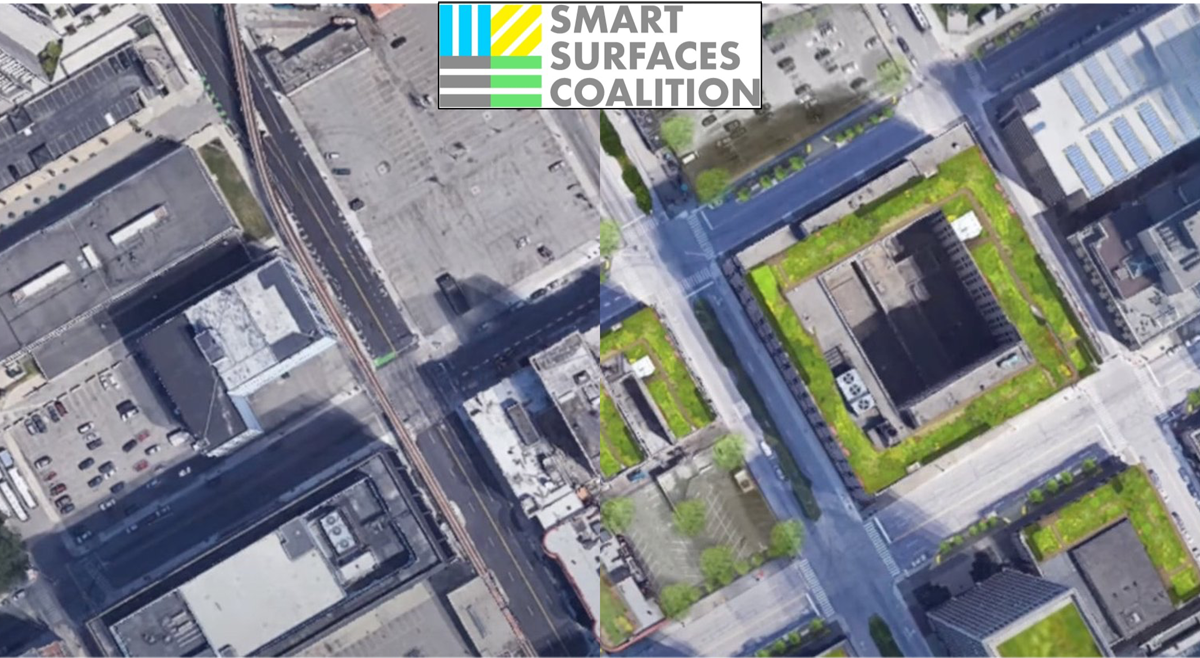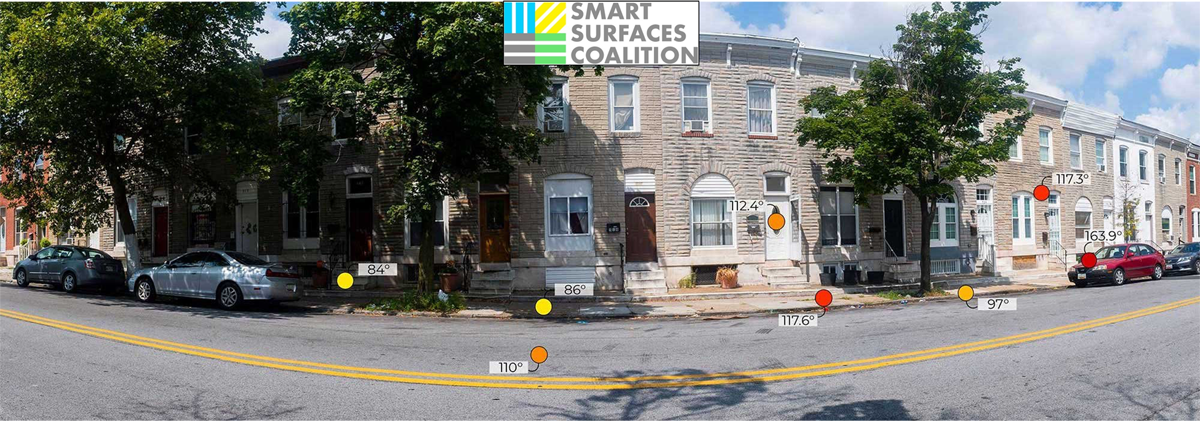WET 7: Cool Smart Surfaces Tackle Heat Islands

California is trying to solve multiple problems simultaneously: rising heat, inequality, clean air & water, and making cities and neighborhoods more resilient and sustainable
As average temperatures rise, and storms grow more forceful, progressive city renewal leaders are making compelling analyses and implementing smart surfaces that enable cities to better utilize sun and rain to cut costs and enhance livability.
On January 19th, Greg Kats of Smart Surfaces Coalition and Greg Spotts of StreetsLA, joined SSV Water Director, Dennis Murphy for an informative conversation about solutions to two problems facing cities, particularly in low income areas:
- Heat islands form in areas with a high density of dark rooftops, roads, and parking lots. Dark urban surfaces absorb heat and make cities 9 degrees (F) warmer in summer on average. Neighborhoods with less vegetation and more dark surfaces can get even hotter
- Impervious surfaces increase flooding, mold, and water pollution. These conditions are exacerbated by heavy rainstorms and flooding seen in recent years attributed in part to climate change.
Smart Surfaces help combat these problems to make cities more livable and environmentally just.
What are Smart Surfaces?
Smart Surfaces help cool heat islands, transform sun rays into electricity, and recharge groundwater when it rains. Examples of Smart Surfaces include
- tree canopies provide shade, clean air, sequester carbon, and reduce flooding risk
- reflective roofs, which are light in color, reflect light and heat
- shade structures reduce heat in outdoor public areas
- solar photovoltaic panels convert sunshine to electricity and provide shading for buildings, sidewalks and other public areas
- green roofs provide shading, reduce building energy use, clean the air, as well as absorb water
- pervious surfaces allow rain to recharge ground water and reduce pollution, storm water runoff and flood risk
- reflective roads, highways, and parking areas – cut global warming, reduce pollution, and decrease city air temperature.
What are Benefits?
Smart surfaces have numerous economic and societal benefits. Public health is improved from fewer heat related deaths and emergency room visits, improved mental health and reduced respiratory issues in children. Energy bills for air conditioning and carbon emissions are lower. Cities save money on water management infrastructure. Improved quality of life makes the city more attractive for residents, businesses, and visitors which is good for the local economy and city coffers.
How do the Benefits vs. Costs Compute?
While each city has a unique mix of dark surfaces, vegetation, pervious vs. impervious surfaces, weather and water conditions, Smart Surfaces Inc has developed analytical framework for analyzing benefits and costs of different types of Smart Surface initiatives. In terms of temperature reduction, reflective roofs are the most impactful. Trees as well as reflective parking areas and roads yield similar benefit/cost ratios, which is lower than estimated for reflective roofs, but can be accomplished with a lower level of investment. Solar PV has the highest benefit:cost ratio because of the energy cost savings, but it typically involves a large investment. Permeable parking areas and sidewalks have an attractive benefit:cost ratio based on level of water infrastructure savings.
As a Smart Surfaces Coalition partner, Sustainable Silicon Valley will be helping to spread the word about the benefits of Smart Surfaces to bay area city leaders.
Watch video with Jackson Becce of Smart Surfaces demonstrating the financial modeling and cost benefit analysis using tools that powered the recent Stockton Report.
